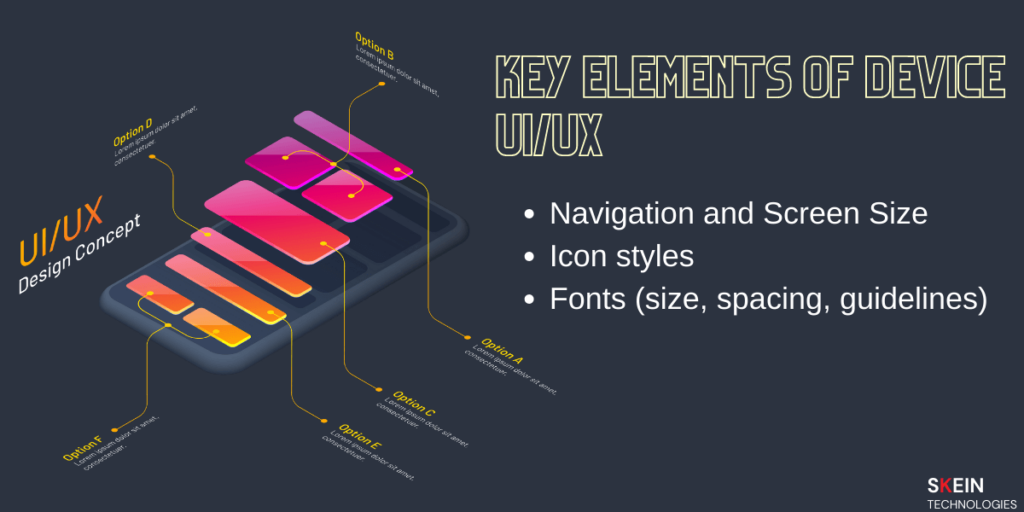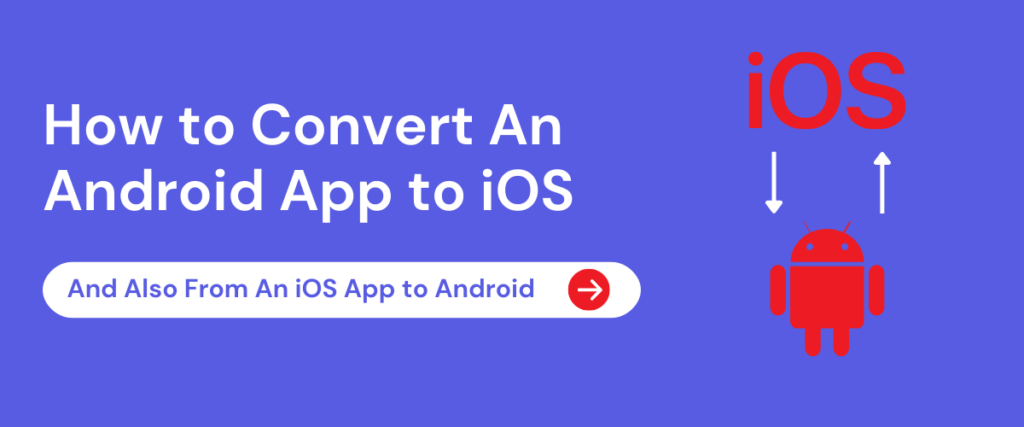Your business is thriving. All thanks to your mobile app.
However, you feel that to expand your business more; you would have to increase your app reach. Having just an iOS app or just an Android app is not sufficient, and you will have to look into the next best step. What does that mean?
It means you will have to find a way to convert your Android app to an iOS app and vice versa.
When you started with your business and decided to develop your business app, it was wise of you to think about building an app for a single platform. This way, you could use your time and money optimally, both of which were limited at the beginning.
Most of the popular apps you know started on a singular platform and were later available on both platforms. For example, Instagram started with an iOS version and, after receiving a positive response, was converted into an Android app. The same is the case for your app.
You will now have a gamut of questions like how difficult is it to have an app on multiple platforms? How can I transform an Android app to iOS or the other way round? Furthermore, where do you begin? What is the difference in the procedure of converting an Android app to an iOS app or vice versa?
This article will highlight the reasons for converting an Android app to an iOS app or vice versa, how to complete the process and the technical differences that would be challenging for you.
Quick navigation
- Why Convert Your Android App to iOS or Vice Versa?
- Process to Convert an Android App to iOS
- How to Convert Your Android App to iOS App
- Convert your application easily
Why Convert Your Android App to iOS or Vice Versa?
There are several reasons for converting an Android app to an iOS app or vice versa. Let us look into some of the benefits of converting the apps from one platform to another:

1. Gateway to Exploring New Markets
Both the platforms, Android and iOS, have their own markets. While iOS is more favored in North America, West Europe, and Australia, Android apps are widely used in Asia, East and Central Europe, South America, and Africa.
It means if you have an app for both platforms, you can cater to all the markets. Hence, converting your app from Android to iOS or the other way round would conveniently help you expand your business.
2. More Opportunities for User Acquisition
Opening to new markets means you can comfortably increase your customer base. This statement is very true in the case of iOS to Android app conversion. Android has a bigger market share, and hence converting your iOS app to an Android app helps you acquire more users.
Additionally, with an iOS app and an Android app, you can target users of both platforms instead of one. This means you can increase your ROI in terms of user engagement, conversion, and acquisition and subsequently increase the number of app downloads.
3. Greater Chances of Profit
While with the conversion of iOS apps to Android apps, you can increase the user base, the probability of increasing your monetary profit is more when you convert your Android app to an iOS app. So if your aim is only to earn profits, converting your Android app to an iOS app is a better option.
Having said that, two apps can generate more revenue than a singular app. Let’s understand how:
iOS users, in all probability, spend more on paid app and in-app purchases than Android app users. It means that even if there are few users on the iOS platform, they will bring your business greater monetary returns.
Simultaneously, Android apps are downloaded more than iOS apps and bring more revenue to your business through in-app ads.
Differences in the Process to Convert an Android App to iOS (And Vice Versa)
Converting your Android app to an iOS app or reverse is challenging. If you are looking forward to leveraging the benefits mentioned above, there are multiple barriers to overcome.
Both the platforms have a separate set of requirements that you would have to keep in mind if you want to port your app from one platform to the other successfully.
The challenges you would face while converting your app from Android to iOS or vice versa include:
1. Different OS versions
Both Android and iOS versions change every year. Both the platforms have their own set of guidelines for UI, US and app design. However, not all users update the OS versions every year. This means that OS versions play an important role in the conversion from Android to iOS or vice versa.
That said, converting your app from iOS to Android is more challenging than the other way round. This is because users update the iOS platform more than the Android platform. You can still use an earlier version of Android; however, it is very unlikely that an iOS user will use an earlier version because of security concerns.
2. Device Fragmentation
While converting apps from Android to iOS, developers need to keep device fragmentation, resolution, and different screen sizes in mind. The same is not the case when you are converting an app in reverse, as device fragmentation is far lesser comparatively.
In the case of Android apps to iOS apps, developers are required to consider device fragmentation between products of different manufacturers.
3. Device UI/UX
Next to consider while converting your app from Android to iOS or vice versa is the device UI/UX. Certain principles guide the device UI/UX design:

Navigation and Screen Size
Android devices primarily have three navigation buttons – home, back, and overview. In comparison, iOS devices have only one navigation button: the home button. The platform uses gestures to navigate between pages and apps. User experience is hence different on both platforms.
Icons
Icon styles, too, are different in Android and iOS. You will have to keep the same in mind while converting your app from Android to iOS or vice versa.
Fonts
Fonts in Android and iOS are different as well. Also, both platforms have their individual guidelines on what font size to use, including font spacing and weight.
4. Programming Languages
Android and iOS platforms have their differences in the core mobile app development process as well. Both the operating systems support different programming languages for their applications.
While Android works with Java and Kotlin, iOS supports Objective C or Swift. There are many other programming languages, but these are the primary coding languages most often used for native Android and iOS app development.
How Can you Convert Your Android App to iOS App and Vice Versa?

Don’t Hire Us Until You Learn How We Can Help You Develop The Right Application & Grow Your Business.
Now that we have discussed the technical challenges, we need to know how to convert an Android app to an iOS app or the other way round.
The easiest of all answers would be to hire the services of a professional app development company in Dubai. By giving the source code, documentation, and media resources, they can easily convert any app.
The other option available is to use an app converter software. However, converting an Android app to an iOS app or the reverse can leave you with an unstable app having functionality issues, performance concerns, and more.
Hence, app conversion requires building your app from scratch. In this process, your team of developers analyzes all app functionalities and requirements. They take time to collect and review all information and documentation from the existing app and then begin the conversion process – from Android app to iOS app or iOS app to Android app.
The next important thing in the conversion process is the design adjustments required for the layout and user interface from an Android app to an iOS app or vice versa. For example, it is important to focus on design patterns and guidelines when you make the switch. In the case of an Android app, it is material design, while for iOS, the design is flat.
It is also essential to keep the UI components in mind since both the platforms have different UI requirements such as navigation bar, CTA placement, back button, and more. As a switching process, you must keep the fonts, design slicing, and UI mirroring in mind. Next comes the testing and launching of the app.
Hence, as said earlier, converting your mobile app from an Android platform to an iOS platform or the other way round is challenging. It is all for the good that you hire a development company to port your app than relying on an app conversion software. After all, you need your app to perform the way you want and generate the desired revenue. All these can happen if you have an app that performs exceptionally and gives your users a satisfactory experience.
Are You Looking to Convert Your App?
Whether you are transforming an Android app to an iOS app or the other way round, you would have to work on the business and technical details and requirements. This process is time-consuming as developing an app from scratch. However, Skein Technologies has just the right solution for you. You can create your own iOS and Android mobile app without any coding or making a hole through your pocket.
To know more about it in detail, get in touch with our experts today.

Rajamanickam Rajan is the director at Skein Technologies, a leading IT solution company in India. He has 10+ years of experience in developing application using IBM Worklight hybrid, native applications for IOS and Android systems.


